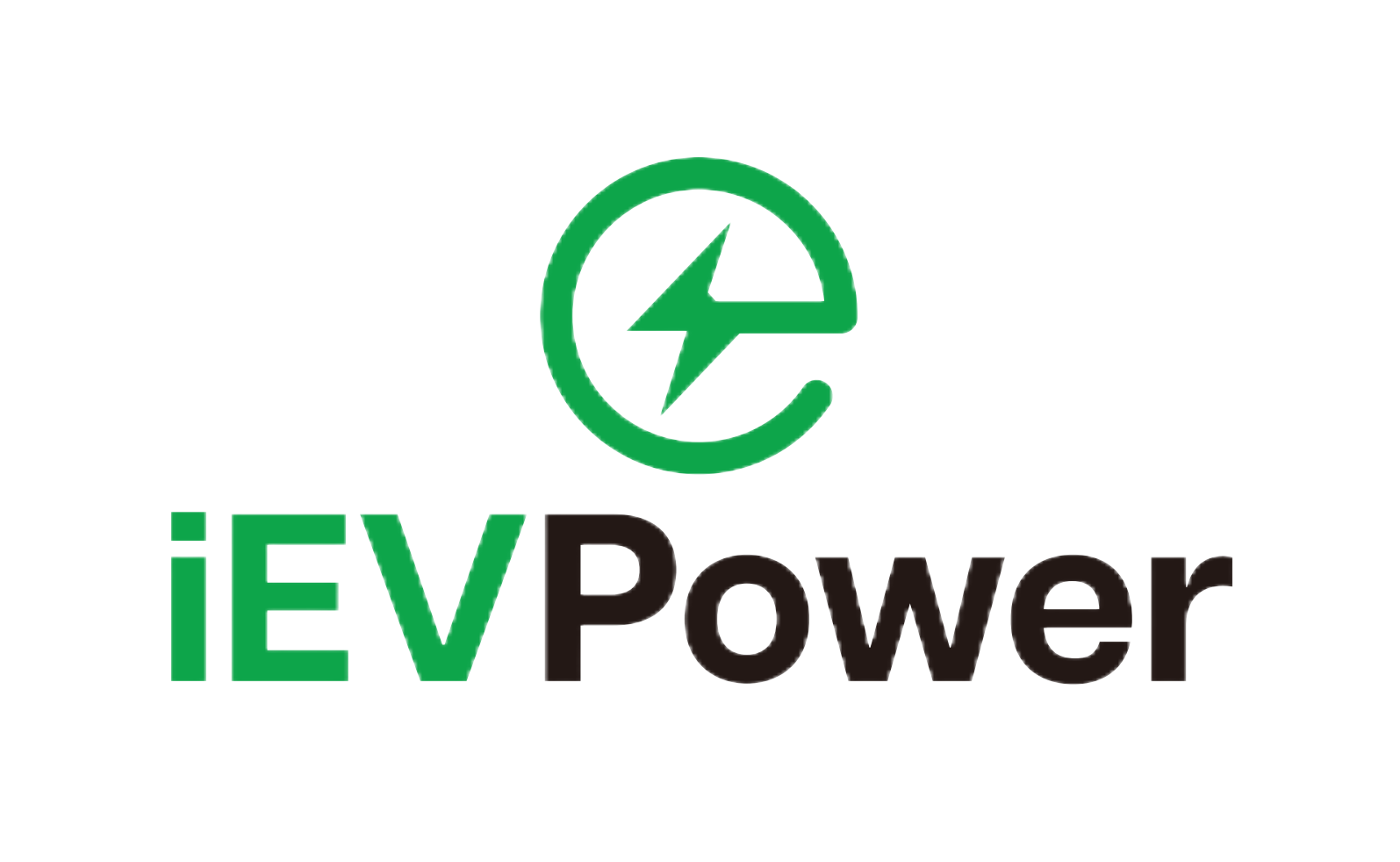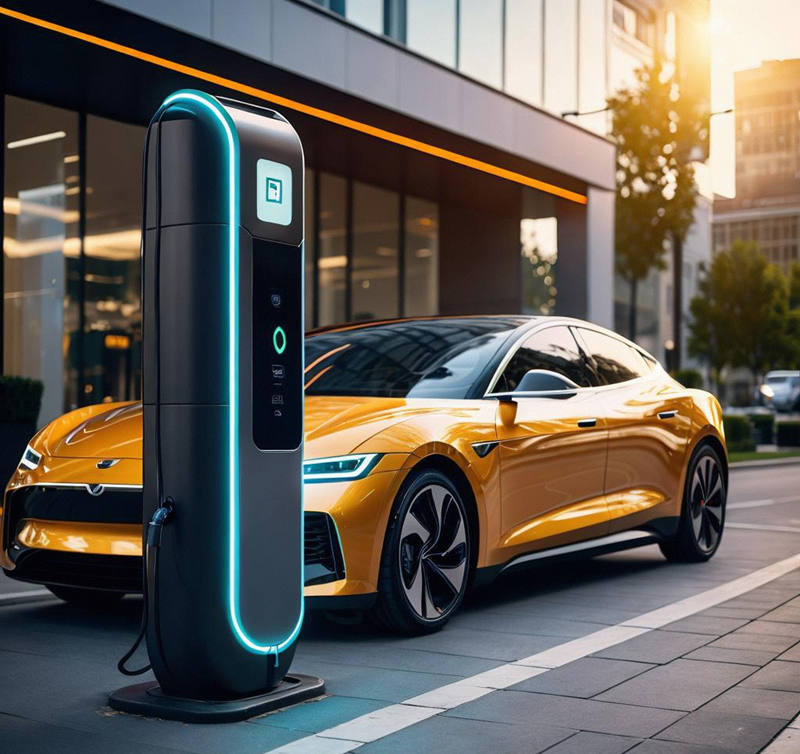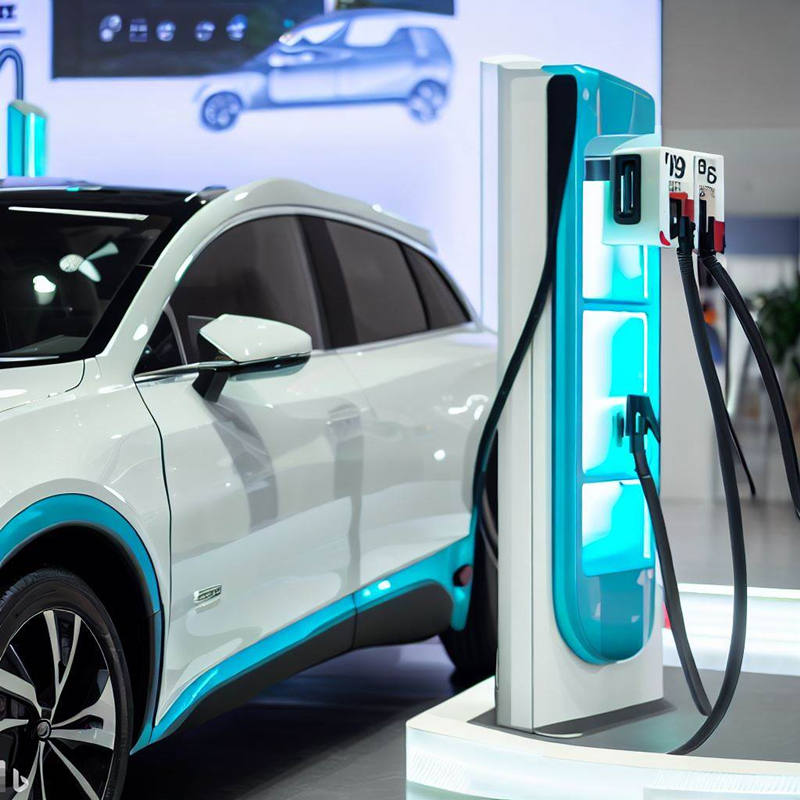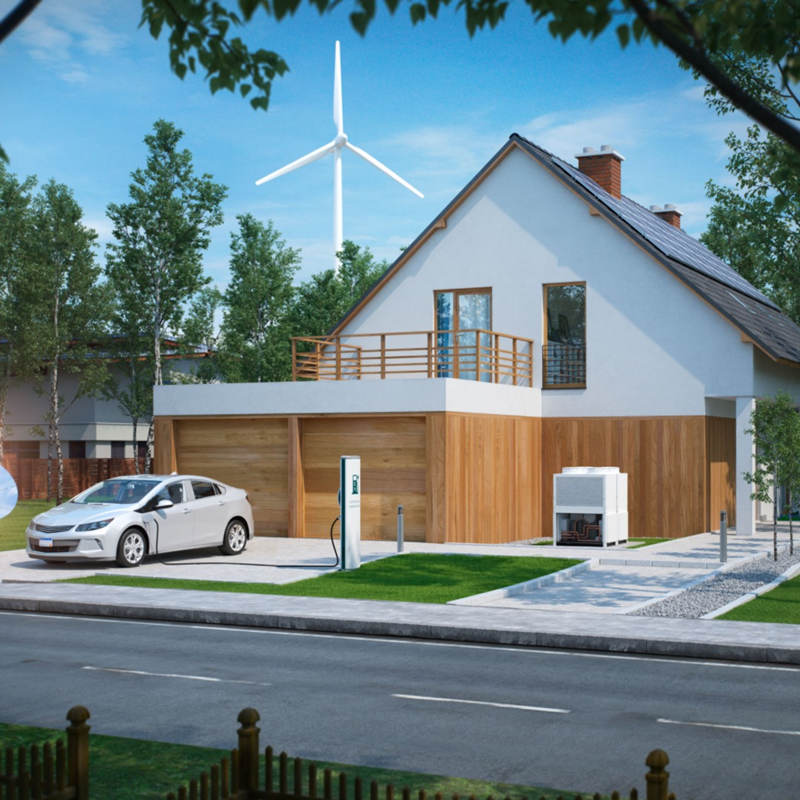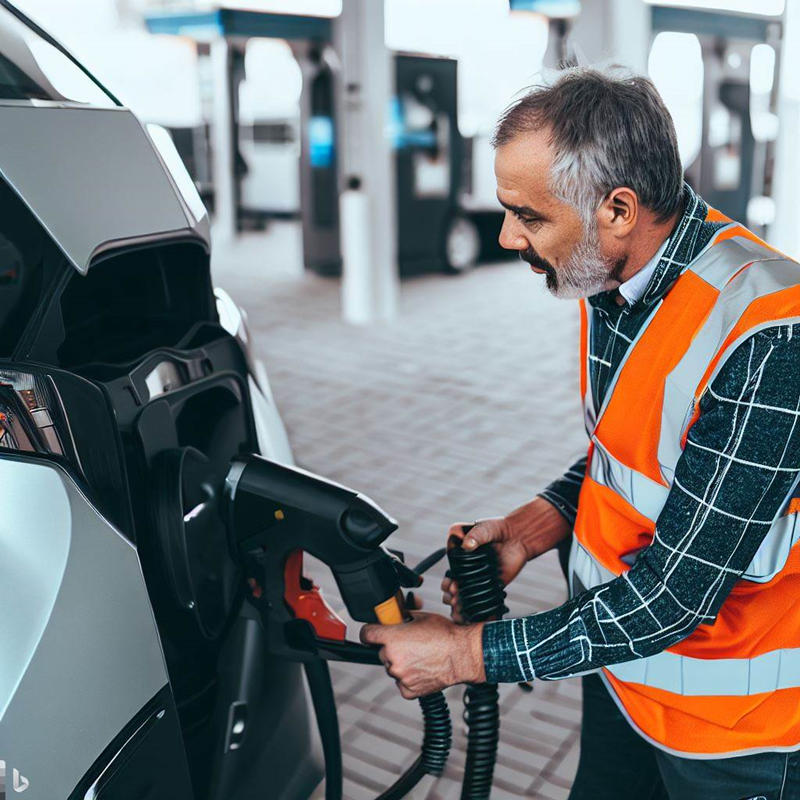The burgeoning electric vehicle (EV) industry has not only revolutionized the automotive sector but has also had a profound impact on the global energy revolution, fostering the development of a clean and efficient energy system.
Bidirectional charging technology enables electric vehicles to both draw power from the grid and return electrical energy to it, facilitating a two-way flow of electricity.
At the heart of this technology is the ability to use the EV’s battery as an energy storage device, charging when needed and releasing energy during peak grid demand, thereby enhancing grid stability and efficiency.

The Concept of Bidirectional Charging Technology
Bidirectional Charging Definition
Bidirectional charging technology is all about the ability of your electric vehicle’s battery to not just take in energy from the grid but also to share the electricity it produces.
Bidirectional Charging Working Principle
When you use a bidirectional charger, your electric car can turn the direct current (DC) it stores into alternating current (AC), which can then power your home or even feed back into the grid.
Bidirectional Charging Classification
This technology comes in various forms, including Vehicle-to-Grid (V2G), where your car can help power the grid; Vehicle-to-Home (V2H), where it can power your house; Vehicle-to-Load (V2L), where it can supply electricity to external loads; and even Vehicle-to-Vehicle (V2V), allowing one car to share electricity with another.

The Disruptive Prospects of Bidirectional Charging
More and more car makers are jumping on the bidirectional charging bandwagon, and experts predict this tech will become more widespread in the next few years.
- Economic Benefits: This technology can help you save money on your energy bills and even put some cash in your pocket by selling electricity back to the grid.
- Environmental Value: By encouraging the use of renewable energy, bidirectional charging helps shift our energy mix and cut down on carbon emissions.
- Technical Challenges and Standard Setting: Despite some hurdles, the creation of global standards and teamwork within the industry are making this technology more accessible and popular.
Bidirectional charging isn’t just about giving electric car owners new ways to make money; it’s also about stabilizing the grid and making the most of renewable energy, marking a new era where electric vehicles and the power grid work hand in hand.
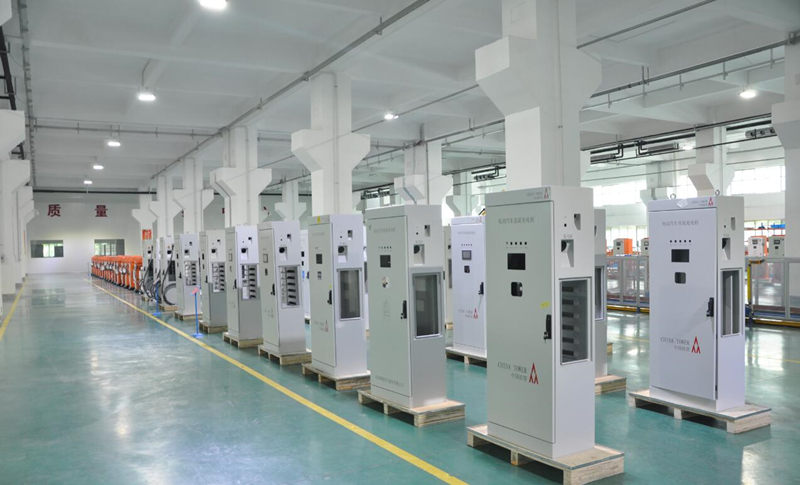
Details of EV Bidirectional Charging Technology
Bidirectional charging technology lets you not only charge your electric vehicle but also send electricity back to the grid, creating a two-way street for electricity.
At its heart, this tech is all about using your car’s battery as a sort of energy bank—charging up when necessary and dishing out power when the grid needs it most, helping to keep everything running smoothly and efficiently.
Let’s dive into how this technology operates and how it sets itself apart from the traditional one-way charging we’re used to:
Working Principle of EV Bidirectional Charging
Bidirectional charging technology is brought to life by a special charger that can take the direct current (DC) from your electric car and transform it back into alternating current (AC) to light up homes or feed into the grid.
What makes this possible is the rapid flipping of semiconductors, which creates a waveform that looks and acts just like DC, allowing electricity to flow both ways.

Bidirectional vs Unidirectional Charging: The Differences Explained
Definition: With bidirectional charging, you get a two-way street for energy—your car can both take in and give back power. On the flip side, unidirectional charging is a one-way trip, with energy only flowing from the grid to your electric vehicle.
Working Principle: Bidirectional charging relies on a converter with semiconductor switches that let current flow in both directions. Unidirectional charging, on the other hand, uses diodes that block current from going the wrong way.
Application Scenarios: Bidirectional charging is perfect for situations like Vehicle-to-Grid (V2G), where your car helps power the grid, or Vehicle-to-Home (V2H), where it can keep your house lights on. Unidirectional charging is the go-to for everyday EV charging.
The advent of bidirectional charging technology opens up new ways for electric car owners to make money and helps ensure the grid stays stable while we harness more renewable energy, ushering in a new era of interaction between our cars and the power grid.
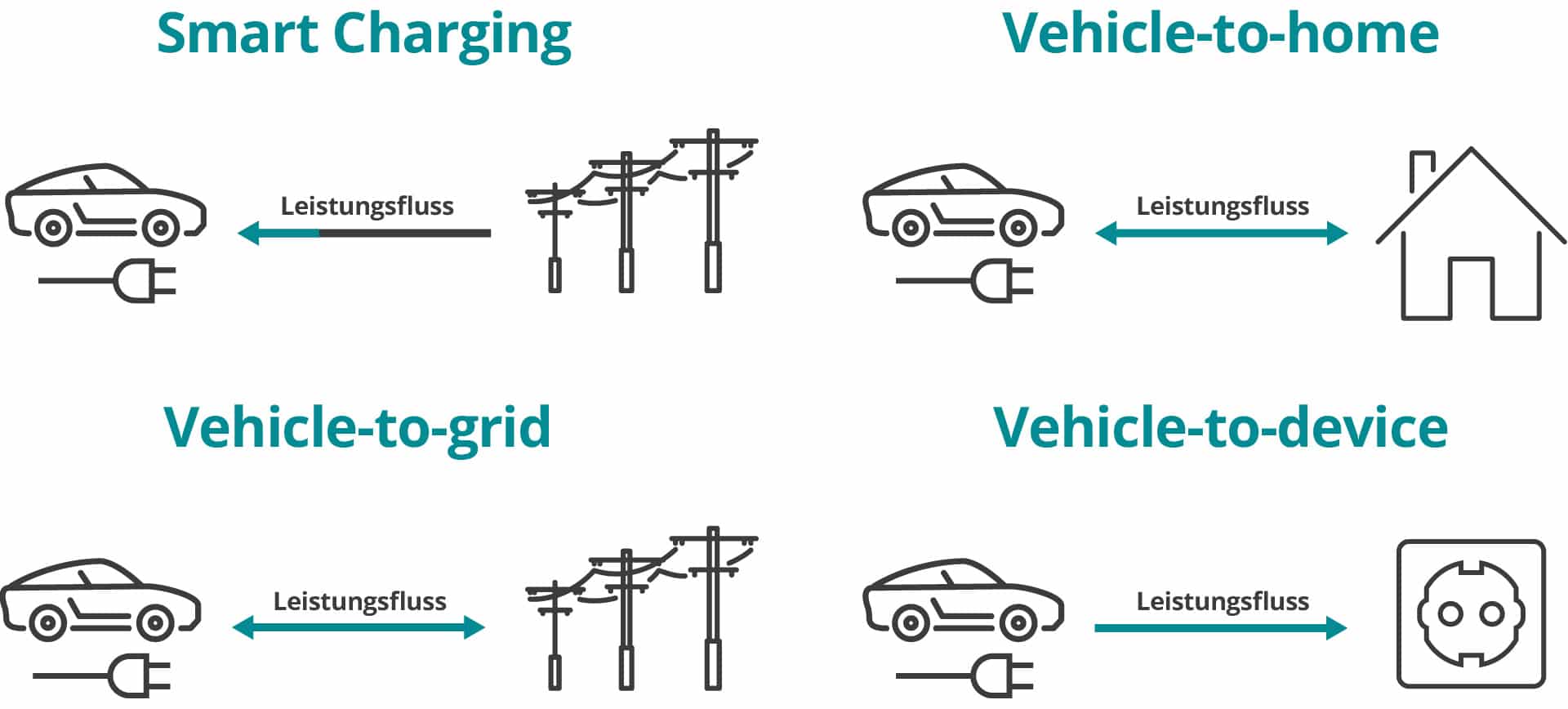
The Pros and Cons of AC and DC Bidirectional Charging
Both AC and DC bidirectional charging have their perks and pitfalls, depending on what you need. Let’s break it down:
AC Bidirectional Charging
Advantages: You can use the AC power straight from the grid without any extra equipment; it’s easy to set up in public spots; and it tends to be more affordable than DC charging gear.
Disadvantages: There’s some energy loss when your car converts AC to DC inside the onboard charger; and it usually charges slower than DC.
Application Scenarios: This is great for charging at home or at public charging stations in malls and parking lots.
DC Bidirectional Charging
Advantages: It’s more efficient since there’s no need for your car to convert the power; it charges faster; and it’s perfect for linking up with the grid for V2G action.
Disadvantages: It costs more to build out; and it needs a steady DC supply from the grid to work.
Application Scenarios: Ideal for those quick charging stations, commercial and industrial settings, and when your car is part of a V2G network, sending power back to the grid.
In short, if you’re looking for everyday charging and public networks, AC bidirection is your best bet for cost and convenience. But if you need a quick charge or want to connect with the grid, DC bidirection is the way to go for efficiency and power.
Keeping Safe and Efficient with Bidirectional Charging
Bidirectional charging technology is key to making electric vehicles more efficient and keeping the grid stable, but it’s not without its safety and efficiency challenges.
When it comes to bidirection, safety is super important. We’re talking about preventing things like overvoltage and overcurrent that could be risky.
Advanced charging control strategies and smart charging management systems, like those from BYD with their dual-gun tech, are crucial for keeping your battery safe and stable when charging at high speeds.
Bidirectional charging also needs to be super efficient to avoid losing energy in the process.
The growth of bidirectional charging technology is vital for the widespread adoption of electric cars and keeping our grids solid.
By using cutting-edge control strategies, intelligent management systems, and high-efficiency tech solutions, we can tackle the safety and efficiency hurdles head-on, pushing the electric vehicle industry forward.
Application Modes of Bidirectional Charging
Bidirectional charging isn’t just about charging up; it’s also about sharing power in ways like Vehicle-to-Grid (V2G), Vehicle-to-Home (V2H), Vehicle-to-Load (V2L), and even Vehicle-to-Vehicle (V2V).
These modes not only make your electric vehicle more efficient but also open up new possibilities for grid stability and renewable energy use. Let’s take a closer look:
Vehicle-to-Grid (V2G)
With V2G, your electric car can be a power plant on wheels, feeding electricity back to the grid when it’s not in use.
This two-way street helps ease grid congestion and can even put some cash in your pocket by playing the electricity price game.
It takes smart coordination between your car, the charging station, and the grid to make sure everything runs smoothly without affecting your driving.
Vehicle-to-Home (V2H)
Imagine your electric vehicle as a backup generator for your home during an outage or peak demand times.
V2H technology makes that a reality, especially handy in emergencies like natural disasters.
It usually needs a special power control system to safely shift your car’s electricity to your home’s grid.
Vehicle-to-Load (V2L)
Need power for an electric grill or a big fan at your outdoor event? V2L technology lets you use your electric vehicle as a mobile power station.
It’s perfect for outdoor fun or emergency situations, giving your EV a whole new level of versatility.
Vehicle-to-Vehicle (V2V)
V2V technology is all about communication. It lets cars talk to each other in real-time using wireless tech, which can help prevent accidents and keep traffic moving smoothly.
It’s a key player in the push for autonomous driving and smarter transportation systems.
Benefits of Bidirectional Charging
Energy Conservation and Emission Reduction: The International Energy Agency (IEA) says that V2G tech could help slash global carbon emissions by roughly 131 million tons. That’s a big win for the environment!
Saving on Your Energy Bill: By diving into V2G services, you could pocket some serious cash, with estimates of up to $600 in annual savings on electricity in the U.S. alone.
Powering Up Efficiently: Bidirectional charging gives the grid a flexibility boost, cutting down on the need for extra infrastructure.
Promoting Renewable Energy Generation: It lets your EV play a part in storing and dishing out renewable energy, which ups the ante on how we use green power.
Spurring Industry Growth: This tech is a catalyst for advancements in batteries, charging infrastructure, and related services, helping the EV industry thrive.
Smart Grids on the Rise: It supercharges the grid’s brainpower, making it smarter at handling the ups and downs of renewable energy.
The Latest on Bidirectional Charging Tech
Buckle up! Bidirectional charging for electric vehicles (EVs) and plug-in hybrids (PHEVs) is going mainstream. This tech used to be just a dream, but now you can find it in some car models already.
It’s not just car companies that are excited. Big organizations like the IEC and ISO are working on the rules to make sure everything runs smoothly. Plus, governments in Europe, the U.S., China, and Japan are all throwing their support behind bidirectional charging with new policies and incentives.
Here’s the coolest part: bidirectional charging is going to work even better with smart grids and connected cars, all talking to each other. As the technology gets cheaper and more widespread, expect to see it everywhere.
Basically, bidirectional charging is on a roll. With all this momentum, it’s going to be a common sight in the coming years. It’s going to be a game-changer, letting our cars and our energy systems work together for a sustainable future.
FAQ About Bidirectional EV Charging
Which electric vehicle chargers are bidirectional?
Current bidirectional electric vehicle charger brands include but are not limited to BYD, Geely, SAIC Roewe, GAC Aion, NIO, XPeng, etc. Some models from these brands support bidirectional charging capabilities.
What is the difference between unidirectional and bidirectional electric vehicle charging?
Unidirectional charging refers to the process where electric vehicles charge from the grid to the battery, while bidirectional charging allows the battery to discharge back to the grid.
This means bidirectional charging can not only charge electric vehicles but also feed energy back to the grid when needed, achieving two-way energy flow.
How efficient is bidirectional charging?
The efficiency of bidirectional charging is influenced by various factors, including charger and battery technology, and energy loss during the conversion process.
Generally, bidirectional charging systems experience 10%-20% energy loss during the charge and discharge process.
However, with technological progress, the efficiency of bidirectional charging is continuously improving.
Is CHAdeMO bidirectional?
CHAdeMO is a DC fast-charging interface standard initially proposed and promoted by Japan. The standard CHAdeMO interface is unidirectional and does not support reverse power delivery.
However, the CHAdeMO protocol has been expanded in later iterations to include bidirectional power transfer functionality, so CHAdeMO interfaces that support bidirectional power delivery do exist, often referred to as “CHAdeMO 3.0” or “CHAdeMO-DC.”
Will bidirectional charging shorten battery life?
Reasonable use of bidirectional charging will not significantly shorten battery life.
In fact, the battery management systems of modern electric vehicles are smart enough to monitor the state of the battery and optimize the charging and discharging process, protecting the battery from overcharging or deep discharging.
What are the benefits of bidirectional charging?
The main benefits of bidirectional charging include two-way energy flow, improved energy utilization efficiency, reduced pressure on the grid, and emergency power supply in critical situations.
Additionally, it helps promote the development and application of Vehicle-to-Grid (V2G) technology.
Does Tesla have bidirectional charging?
Tesla’s Supercharger stations mainly support unidirectional charging, i.e., from the grid to the vehicle.
However, Tesla’s vehicles (such as Model S Plaid+) themselves support bidirectional charging capabilities, but this feature has not been activated for use with Tesla’s home chargers.
Tesla has indicated that this function may be activated through future software updates.
Why do electric vehicles use bidirectional converters?
Electric vehicles use bidirectional converters to achieve bidirectional energy flow.
This converter can convert AC from the grid to DC for vehicle battery charging during charging and convert DC from the battery to AC to feed back to the grid or other devices when discharging is needed.
Is DC current bidirectional?
DC current itself can flow in both directions, but in traditional DC charging systems, energy usually flows from the charging pile to the electric vehicle.
Bidirectional charging technology enables DC current to flow from the electric vehicle to the grid or other devices.
What are the standards for bidirectional charging?
The standards for bidirectional charging include but are not limited to IEC 61851-1, IEC 61851-23, and ISO 15118, which define the communication protocols and energy management requirements between electric vehicles and the grid.
